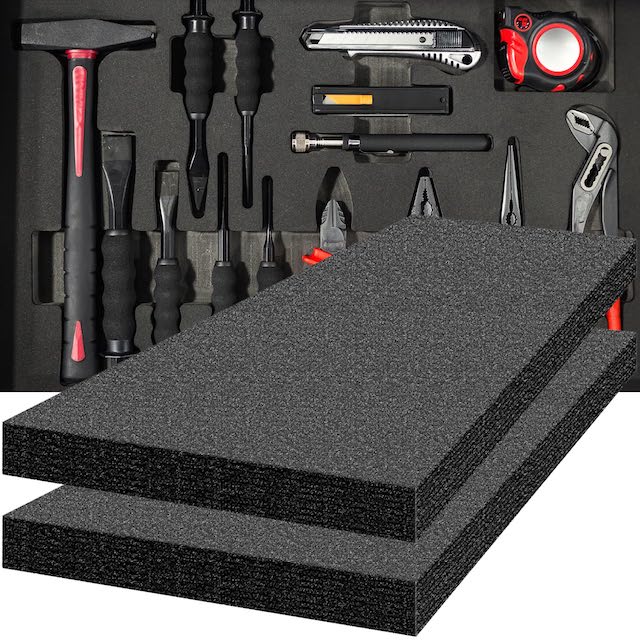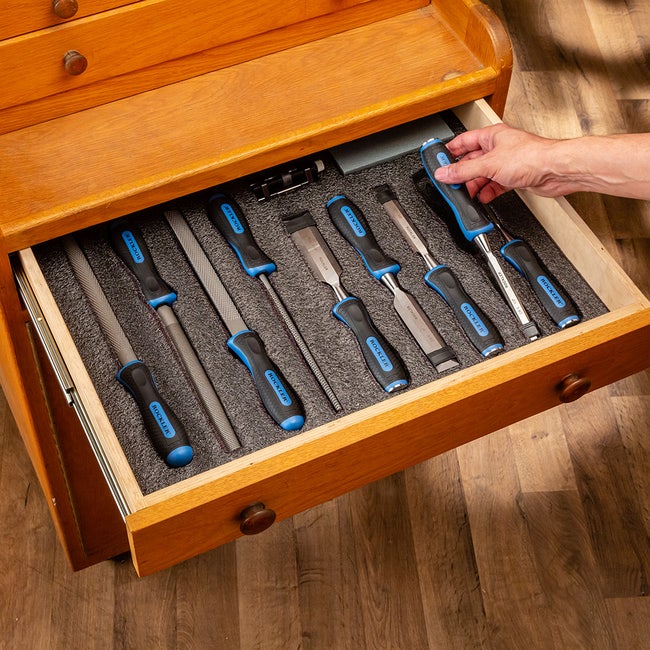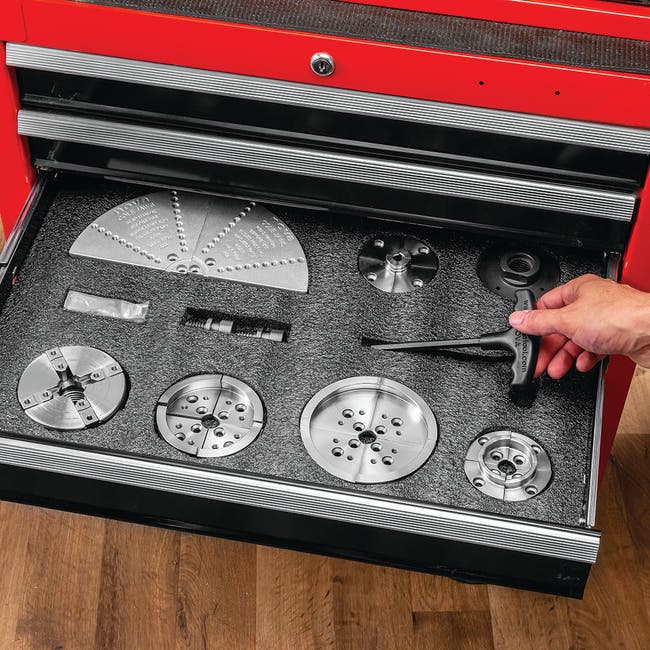
Tool Box Foam: Maximizing Organization and Efficiency
Introduction
Tool box foam is a versatile and practical solution for organizing and protecting your tools. Whether you are a professional mechanic, woodworker, or DIY enthusiast, having an organized tool box can save you time and frustration, leading to increased productivity and efficiency. In this comprehensive guide, we will explore the benefits of using tool foam, different types and styles available, and how to best utilize it to keep your tools safe and easily accessible.
Part 1: Understanding the Benefits of Tool Box Foam
Level 1: Protection and Organization
Tool box foam provides a secure and organized storage solution for your tools, preventing them from shifting or becoming damaged during transportation. The foam’s custom fit design ensures that each tool has its own designated space, preventing them from coming into contact with each other and causing friction or damage. This not only protects your tools but also prolongs their lifespan, saving you money in the long run.
Level 2: Time-Saving and Efficiency
By having a designated spot for each tool, tool box foam can significantly reduce the time spent searching for the right tool. This not only reduces frustration but also increases efficiency, allowing you to complete tasks more quickly and effectively. Additionally, the visual organization provided by tool box foam makes it easy to see if any tools are missing, preventing the loss of valuable equipment.
Part 2: Types and Styles of Tool Box Foam
Level 1: Pre-Made Foam Inserts
Pre-made foam inserts come in a variety of shapes and sizes to fit different tool boxes and tools. They are designed to fit specific tool sets and can be easily customized by cutting out the desired shapes to accommodate your tools. This type of foam provides a quick and convenient solution for organizing your tools, with minimal effort required.
Level 2: Customizable Foam Sheets
Customizable foam sheets allow you to create a completely tailored storage solution for your tools. These sheets can be easily cut and shaped to fit any tool box, regardless of size or shape. Customizable foam sheets provide the flexibility to create a unique arrangement for your tools, maximizing efficiency and organization.
Part 3: Utilizing Tool Box Foam for Maximum Efficiency
Level 1: Tool Organization
Utilize tool box foam to create a system for organizing your tools based on their frequency of use or specific job requirements. This will make it easier to locate and access the tools you need, saving time and increasing productivity. Consider using different colored foam for different tool categories or departments to further streamline organization.
Level 2: Custom Tool Storage
Customizing your tool foam to fit the exact shape and size of your tools ensures a secure and snug fit. This prevents tools from rattling around during transport and minimizes the risk of damage. Moreover, having a dedicated spot for each tool makes it easy to notice if any tools are missing.
Part 4: Tips for Maintaining and Cleaning Tool Box Foam
Level 1: Regular Cleaning
Regularly cleaning your tool foam is essential to maintain its effectiveness and prolong its lifespan. Dust and debris can accumulate over time, causing the foam to lose its grip and protection. Use a vacuum cleaner or compressed air to remove any buildup, and ensure the foam is completely dry before placing your tools back in the box.
Level 2: Replacing Worn Foam
As tool box foam is used over time, it may become worn or lose its shape. When this happens, it is important to replace the foam to continue protecting your tools effectively. Keep an eye out for any signs of wear and tear, and replace the foam inserts as needed to maintain optimal tool organization and protection.
Part 5: Benefits of Using Tool Box Foam Inserts
Using tool box foam inserts offers a range of benefits that make them a popular choice for organizing and protecting tools. One significant advantage is the customization options that foam inserts provide. By using a foam insert, individuals can create a unique organization system tailored exactly to their specific tools. This level of customization allows for better organization, which in turn leads to increased efficiency and productivity.
Furthermore, tool foam inserts provide excellent protection for tools. The foam’s soft yet durable material helps prevent damage to the tools from shifting and banging into one another during transport. This protection not only extends the life of the tools but also ensures that they remain in good working condition when needed.
In addition, using foam inserts in tool boxes can also improve workplace safety. This is particularly important in industrial settings where an organized and secure tool storage system is critical to maintaining a safe work environment.
Overall, the benefits of using tool foam inserts are numerous. From improved organization to increased tool protection and enhanced workplace safety, foam inserts offer a practical and efficient solution for tool storage and organization needs.
Part 6: How to Customize Tool Box Foam Inserts
Customizing tool foam inserts is a straightforward process that allows individuals to create a tailored organization system for their tools. To begin customizing foam inserts, individuals will need to measure the interior of their tool box and the shapes of their tools. This will help ensure a precise fit for the foam inserts. Next, the measurements should be transferred onto the foam sheet, and the outlines of the tools can be traced onto the foam with a marker.
Once the outlines are traced, individuals can use a sharp utility knife to carefully cut out the shapes from the foam. It’s important to take your time and cut along the lines as accurately as possible to create a snug fit for each tool.
After all the shapes are cut out, the foam inserts can be placed into the tool box, and the tools can be positioned into their designated slots. Customizing tool box foam inserts allows individuals to create a personalized and efficient tool organization system that maximizes space and protects tools from damage during transport or storage.
Part 7: Tips for Maintaining Tool Box Foam Inserts
While tool box foam inserts are durable and provide excellent protection for tools, it’s essential to properly maintain them to ensure their longevity and effectiveness. Here are several tips for maintaining tool foam inserts:
- Regular cleaning: Over time, foam inserts can accumulate dust, dirt, and debris. Regularly remove the inserts from the tool box and clean them using a mild detergent and warm water. Allow the foam to air dry completely before returning it to the tool box.
- Check for damage: Inspect the foam inserts periodically for signs of wear, tear, or damage. Look for any fraying, tearing, or compression in the foam that could compromise its ability to protect tools. Replace any damaged foam inserts as needed.
- Use protective covers: Consider using protective covers for the foam inserts to further shield them from dirt and debris. These covers can be easily removed and washed, extending the life of the foam inserts.
- Store in a dry environment: Moisture can damage foam inserts over time. Store the tool box in a dry environment and avoid exposing the foam inserts to excessive humidity.
By following these maintenance tips, individuals can prolong the life of their tool box foam inserts and ensure they continue to provide excellent protection and organization for tools.
Conclusion
Tool box foam is a practical and efficient solution for organizing and protecting your tools. By utilizing the benefits of tool foam, understanding the different types and styles available, and learning how to best utilize it, you can maximize the efficiency of your tool storage. With a well-organized and protected tool box, you can save time, reduce frustration, and increase productivity, ultimately improving the quality and efficiency of your work.


